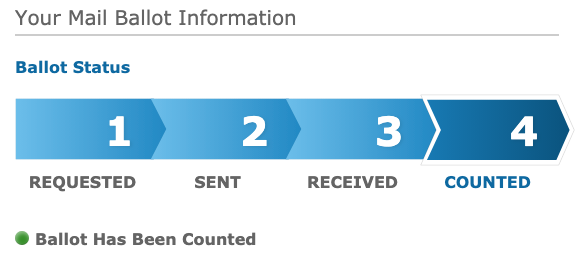
Election Day is less than one month away. And while candidates fight for your vote, it’s important to know what happens after you cast it.
US voters don’t vote directly for a presidential candidate. The process, as laid out by the founding fathers, is a little longer and more complex. USAGov can help you understand where your presidential vote goes after you pull the lever on Election Day.
For local, statewide, or congressional elections, your vote goes directly to the candidate. The one receiving the majority of the votes wins. While these races get less attention from the public and the media, their impact on everyday life can be as great as the presidential race.
The race for the White House is a little different. When you cast your vote for president, you are actually voting for a group of people known as electors. They are part of the Electoral College, the process used to elect the U.S. president and vice president.
The idea for using electors comes from the Constitution. The nation’s founding fathers saw it as a compromise between electing the president by a popular vote among citizens and electing the president in Congress.
The number of electors each state gets is determined by how many members of Congress (House and Senate) the state has. Including Washington, D.C.’s three electors, there is a total of 538 electors in all.
After you cast your ballot for president, your vote goes to a statewide tally. In 48 states and Washington, D.C., the winner gets all the electoral votes from that state. Maine and Nebraska assign electors using a proportional system called the Congressional District Method.
Whoever reaches a nationwide total of 270 or more electoral votes will become the new president. Although the actual vote of the Electoral College takes place in December, in most cases, a projected winner can be announced on election night.
It is possible to win the electoral college, but not the popular vote. That means that a candidate can win a combination of states and reach the 270 electors mark without winning the majority of votes across the country. This has happened four times in American elections, most recently in 2000.
In the rare event that no candidate gets the needed 270 electoral votes in December, the decision would go to the newly-elected House of Representatives, who would vote to elect the new president. A similar process would take place in the Senate to elect the vice president. The only time this has happened was during the 1824 election when John Quincy Adams received the most votes in the House of Representatives after no candidate won a majority of the Electoral College.
This makes your vote for congressional seats far more important. In a close presidential election, your vote for your member of Congress could end up helping decide the White House’s new occupant.
Learn more about the Electoral College by visiting USA.gov/voting, your official guide to voting and the election process. And make sure you’re ready for Election Day with USAGov’s guide: Five Things to Know Before You Vote. #voteusa